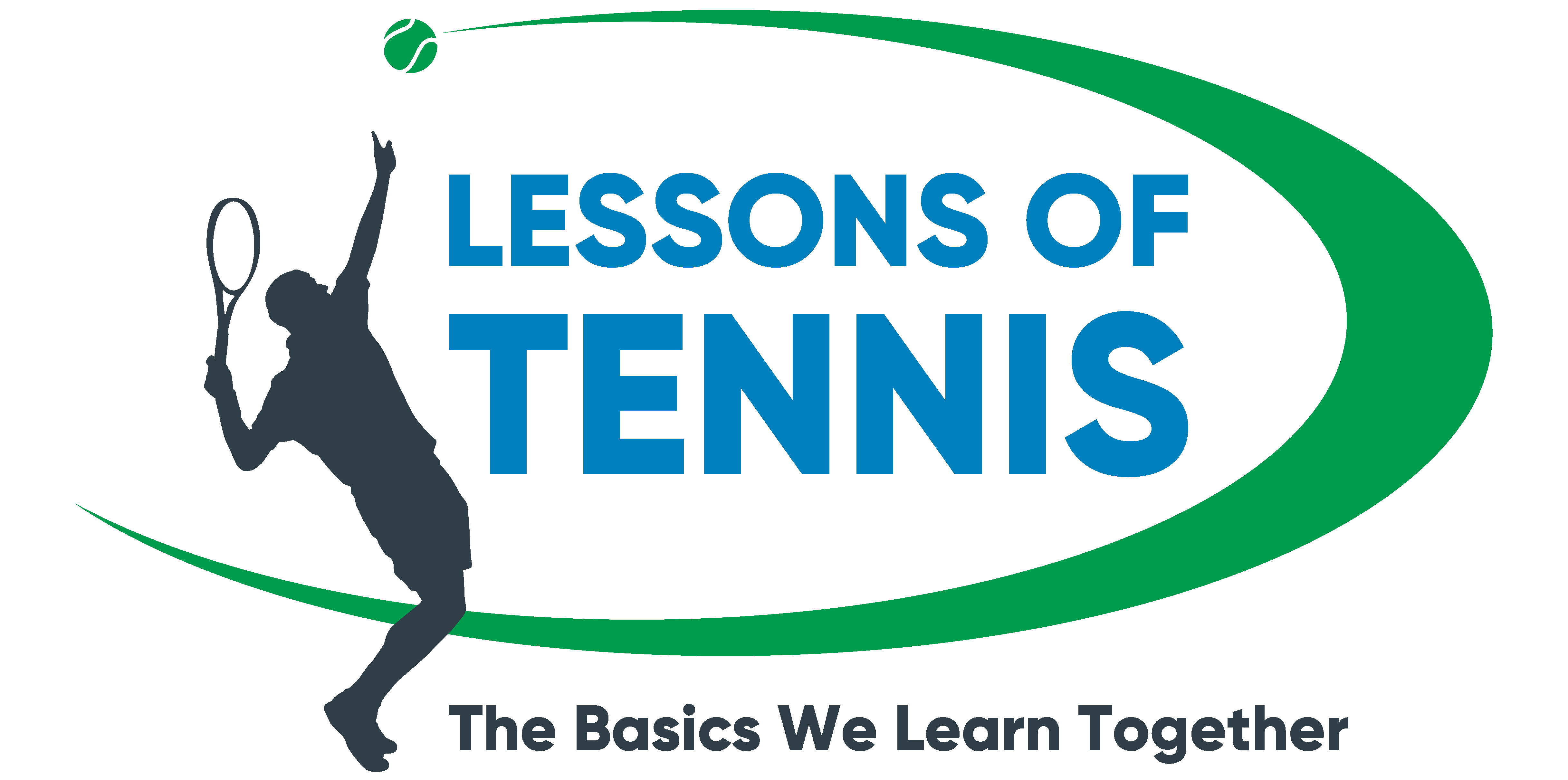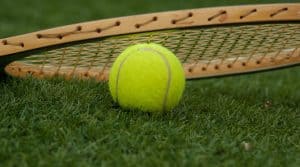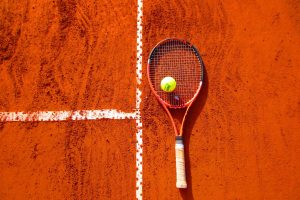It’s What’s on the Court’s Surface That Counts
There are 3 main types of tennis court surfaces and each have their own unique characteristics to suit your game. They are hard courts, grass courts, and clay courts. Most courts in the USA are hard courts, but look for offers of to experience the thrill of grass and clay courts. It’s worth it. Let’s detail how each court surface will offer advantages and disadvantages to each style of tennis.
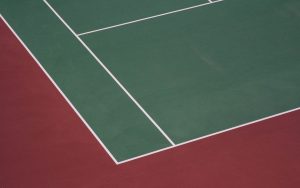
Hard Courts
Hard courts are the most common of the tennis court surfaces to be used today. Most matches at all levels in the USA are played on a hard court, including clubs, schools, parks, and rec centers. This is due to the low maintenance and great all around platform the hard court provides.
This court is suitable for all styles of play, including serve and volley, baseline, and all around. Topspin and slice are very effective on hard courts. You will be able to use consistent positioning and technique, allowing you to focus on beating your opponent. It mitigates the abilities of a ‘specialist’, that is someone who specializes in playing on clay or grass courts.
The downfalls of a hard court are leveling that playing field if you are indeed a specialist. Also, it tends to be a bit harder on your joints and, in particular, your knees if you play often. There are many different fitness techniques outside of my realm that you can use to offset the pain problem, to be researched to your specific needs.
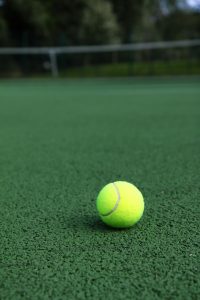
Grass is the Root of it All
Grass is the surface that tennis was originally played on, hence the term lawn tennis. This slick tennis court surface can produce a fast, exciting form of tennis. Expect your points to be short, and hope your reflexes are quick. Your decision time in a point is reduced significantly on this surface when compared to the others. The ball bounces low, so style and technique both play a big role here.
Benefits and Drawbacks of a Grass Court
A serve and volley player will be able to dictate the points as the returner has less time to react. The power of your shots, the serve in particular, are amplified on this surface. For those who have flatter shots, this court suits them perfectly. If your conditioning is less than desirable, choose this court to get your points done with quickly.
Spin is less effective on grass courts. The ball will tend to slide regardless of the spin you have put on the ball. In addition, if you have superior fitness, the benefits that provides shows up less on this court.
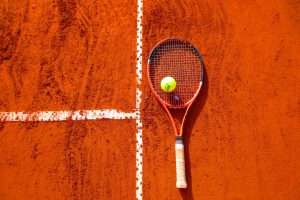
Clay Courts
Clay courts are available at some country clubs and schools in the USA but are still insufficiently available. They are very common in Europe, and are a staple on the pro circuit around the time proceeding the French Open, officially called Roland-Garros. It is the only one of the four major tournaments in tennis that is played on clay. This wasn’t always the case, though. The U.S. open actually used to be played on clay, for a period of 3 years in the 1970s. (The U.S. open was played on grass before that, and hard courts since 1978).
Clay, a fun and the most unpredictable of all the tennis court surfaces, will take some adjustments. You will likely play longer points on clay. The ball will slow down on the bounce, providing your opponent (and you) more time to reach the ball. This will allow you to get into a proper position for the next shot. The inconsistencies of the court provide for an entertaining and sometimes maddening experience. Shots you expect to bounce high will suddenly die. Balls expected to bounce along the same continuous path it is on will suddenly veer left or right.
Footwork on clay is vastly different than all the other tennis court surfaces. Sliding is not only common it is used as a weapon. It is quite a necessity to win on clay that you must be able to adjust your footwork. First, you are always in a point on clay. Second, keep balanced as often as possible. Be ready for the next shot, and expect it to not go as planned. Adjusting on the fly will gain you and edge. Always have your racket ready as the bounce will not be what you expect. Focus, and have fun!
What Tennis Style is Suited for Clay
You will find using racket techniques like slice, side spin, and drop shots can be amplified on this surface. Clay is also hugely beneficial to those who have excellent conditioning, as they will be able to sustain more points for longer periods of time without much drop off in the quality of their game. As a baseline player, or counterpuncher, this court surface is certainly most suited for you.
What Tennis Style Isn’t Suited for Clay
Conversely, if your level of fitness is less than that of your opponent, you may want to stay away from clay. Also, if power is the name of your game, this court will slow you down like a speed bump at the Indy 500. Serve and volley players may find their style ineffective, as their opponent has extra time to place a great return and swing the point to their favor.
Let’s Just Play!
Tennis is fun no matter what surface you choose to play on. The techniques, styles, and abilities of each player will show up no matter the surface you choose to play on. Footwork and positioning, 2 extremely important factors in any players game, is as equal of a factor on hard courts as it is in clay and grass. Use your abilities and the advantages that each surface supplies to gain an edge on your opponent, taking control of the point and, hopefully, the match!
